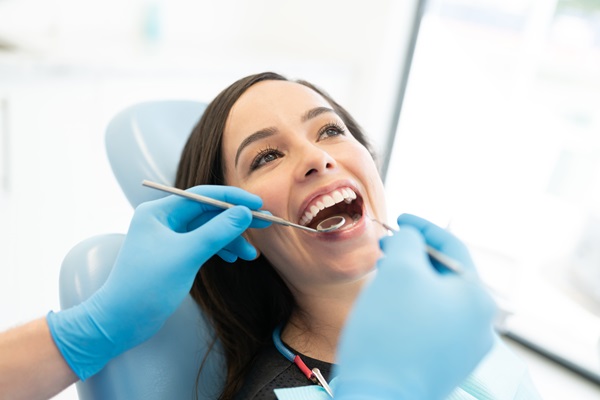What Are Corrective Braces?

Corrective braces are ideal for achieving an attractive smile as they can create a symmetric and even smile. This can also provide oral health benefits and reduce the risk of concerns like cavities. In this review, we discuss the basics of corrective braces to help you decide if they may be right for you.
Corrective braces explained: Definition, benefits, and more
Here is everything to know about corrective braces, so patients can be well-informed before visiting an orthodontic professional for a consultation. We define corrective braces, highlight the benefits, and discuss when a dental or orthodontic professional may recommend them.
Corrective braces defined
Corrective braces are a form of orthodontic treatment that uses metal brackets and wires. With this method of orthodontic care, teeth are shifted into their proper position over time. There is a range of corrective braces types:
- Traditional (metal) braces
- Ceramic braces
- Lingual braces
- Invisible braces
The best type of corrective braces depends on the patient's preference and the severity of the misalignment that needs to be addressed. For instance, invisible braces may work well for an adult with a mild misalignment, whereas someone with a severe misalignment may require metal, ceramic, or lingual braces.
Issues corrective braces fix
Corrective braces are the most effective orthodontic solutions for treating all types of teeth and jaw misalignments. They can treat mild to severe cases. Specifically, the types of issues that corrective braces can fix are:
- Overcrowding
- Gapped teeth
- Crooked teeth
- Protruding teeth
- Underbite
- Overbite
- Crossbite
Corrective braces benefits
Many people are familiar with the cosmetic benefits of corrective braces, including a more symmetric smile. Most patients feel that this gives them more confidence and is more attractive to others. There are also oral health benefits of corrective braces. For instance, a straight smile makes it easier to protect all areas of the teeth and reduces the risk of cavities, oral infections, and gum complications.
Treatment process
The treatment process for corrective braces begins with a consultation. During the first visit, the dental staff can evaluate the patient's teeth and jaw alignment and recommend a treatment plan. The patient may choose the type of corrective braces on this visit before scheduling a follow-up to start the process. Some patients may require specific restorative procedures before starting corrective braces, including dental fillings, gum disease treatment, and teeth extraction.
Once the mouth is prepared, the dentist installs the braces, which usually involve metal or ceramic brackets and wires (clear aligners do not require metal brackets and wires). The wires are tightened periodically as teeth move into their proper positions. After treatment, the patient is given a retainer to ensure that the teeth do not shift back to their original positions. Overall, the process can take six months to two years.
Contact our orthodontic office to schedule a consultation
Are you considering corrective braces? If so, then contact our office. We take genuine pride in helping our patients achieve an attractive and healthy smile that gives them the confidence that they deserve each day. So, why wait? Get in touch today, and schedule a consultation at a time that is convenient for you.
Request an appointment here: https://www.orangecoastortho.com or call Orange Coast Orthodontics at (949) 860-1231 for an appointment in our Laguna Hills office.
Check out what others are saying about our dental services on Yelp: Types of Braces in Laguna Hills, CA.
Recent Posts
An orthodontist spends their entire career helping people to feel confident with their smiles, so if you have searched for “orthodontist near me” and are faced with choices about whom to see, you should choose a professional who values your patronage and happiness.Orthodontists focus on how the teeth are aligned and the jaw's position and…
You might not be aware of the cosmetic orthodontic options you have to improve your smile, but cosmetic dental restorations can be used to improve how aligned your teeth look. Some orthodontic treatments also provide cosmetic benefits as they improve the alignment of your teeth.Before going any further, we should clarify the difference between a…
Asking about invisalign for teens® is important. This allows parents like you to know what their teenagers will face during the treatment. This is a more comfortable, discreet way to straighten teeth. Even so, it is important to know what you can about it. If you want to ask your orthodontist about Invisalign for teens,…
Thinking of going for orthodontic treatment but worried about unsightly metal braces? Read on to learn about the advantages of aesthetic braces. For decades, patients had no choice but to straighten their teeth with unsightly braces with metal brackets and wires. This had a tremendous impact on their self-esteem, and many decided to forego braces…


